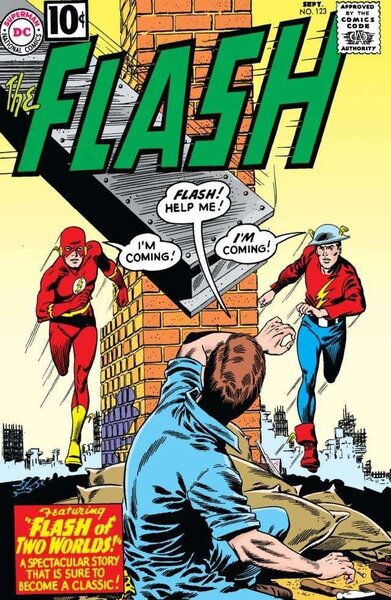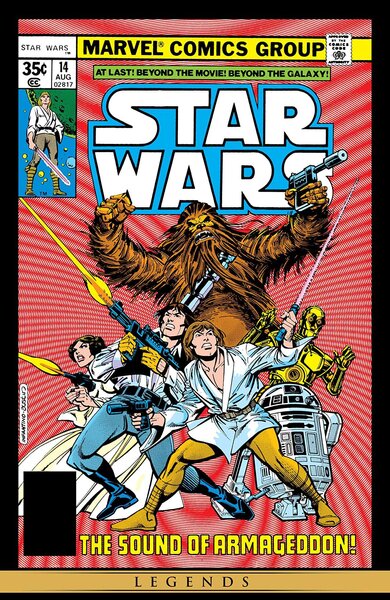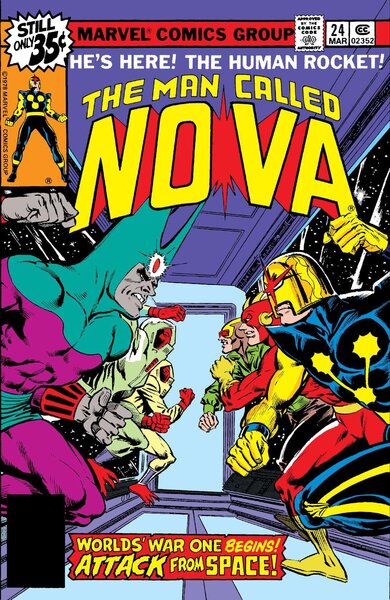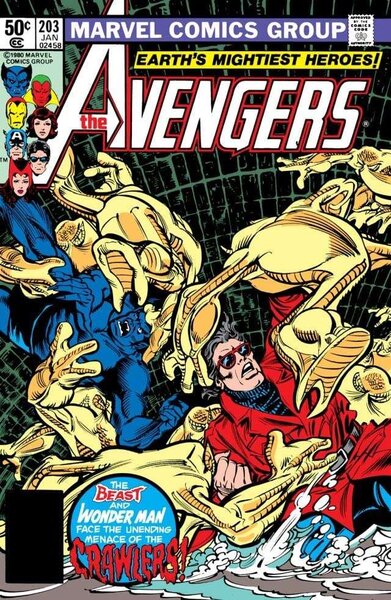Create a free profile to get unlimited access to exclusive videos, sweepstakes, and more!
Remembering legendary artist Carmine Infantino's astounding time at Marvel
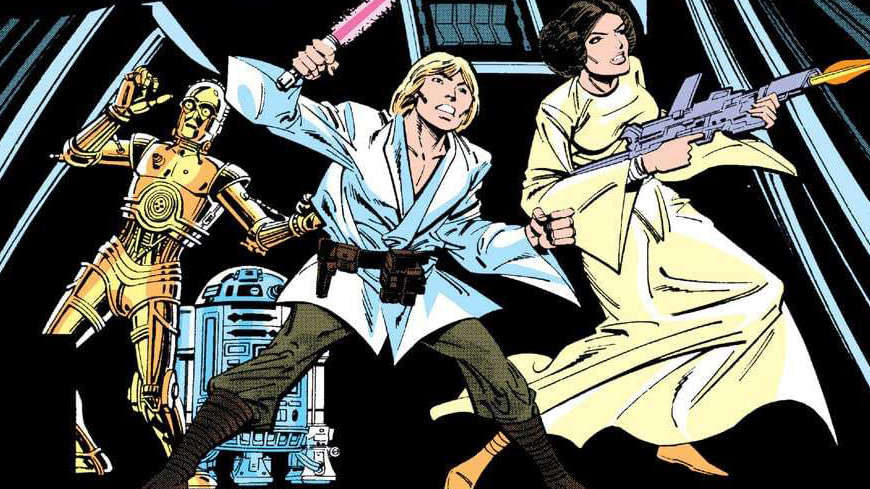
The very first time I laid eyes on Carmine Infantino's artwork was when I saw Star Wars Issue #14 on a spinner rack. It's a memorable cover, featuring the entire crew of characters from that galaxy far, far away. I was a devoted reader of that original Marvel Star Wars series, even though I couldn't stand the artwork. I hated it because it looked completely different from what I was used to seeing in a Marvel book.
Ah, the ignorance of youth. It would take me years to truly appreciate the artistic genius of Carmine Infantino.
Infantino would have turned 96 on May 24 (he died in 2013), and a titanic talent such as his deserves another turn in the spotlight. The guy was a brilliant artist, editor, and daring publisher (he is the guy who convinced Jack Kirby to leave Marvel and start the Fourth World). But, for my money, his greatest talent was in cover design. He belongs in the pantheon of the all-time great comic book cover artists, alongside Kirby and Gil Kane. Infantino's covers for The Flash were some of the defining images of the Silver Age, like the iconic image for the classic Issue #123, "The Flash of Two Worlds."
By 1967, as DC's art director, he was in charge of designing the covers for the entire line. And why not? The guy knew how to get a reader's attention with his sleek pencils and clear design aesthetic. Former DC publisher Paul Levitz once told me how Carmine, during his stint as publisher in the '70s, would sit in editorial meetings and do rough sketches for cover layouts that would eventually make their way to the artists, and then publication.
"Carmine drew reality particularity beautifully and smoothly," Levitz told me during an interview in 2019. "And the work he was doing from… say 1960 to about 1967 when he started stepping away from the board for executive positions is really the peak of his career. It's just gorgeous stuff to look at."
To Levitz, Infantino's genius extended beyond just the crisp line art. To him, Infantino revolutionized the entire process of designing a cover image that would entice someone to plunk down their 15 cents. "The concepts were so outrageous," he says. "You know, 'Stop, you have to buy this comic or I'll be dead.' 'I have the strangest feeling I'm being turned into a puppet.' I don't think [longtime DC editor] Julius Schwartz did a lot of drugs at that age, but whatever he and Carmine were on when they cooked up that cover, it's pretty good stuff."
There is no shortage of great compilations of Infantino DC covers floating around on the internet, including this one SYFY WIRE did a few years back. But it's Infantino's late-career run at Marvel I wanted to focus on here because that was my introduction to him. Especially his tenure on Star Wars, in which he penciled covers and the interior pages for much of the series' first four years. His art style had evolved from his days at DC. The sleek characters were blockier, R2-D2 seemed to give him fits because he always made him look like an overweight droid, but… it was full of energy. Years later, Infantino's rendition of Darth Vader is what comes to mind when I think of the character because of the way he drew the long cape and muscular physique. Star Wars was a phenomenon back then, so maybe that comic sells like wheat cakes no matter who's drawing it, but the fact is, while Infantino was the artist, it was one of the industry's top sellers. And for an entire generation of young fans starved for more adventures in George Lucas' galaxy, it was Infantino's depiction of the rebels and Darth Vader that helped solidify our devotion.
I would constantly run into Infantino's distinctive artwork in my early days of fandom because I was such a Marvel Zombie. His work on Nova was particularly memorable because Nova's stories and strange rogues gallery seemed to fit with his art style. By this stage in his career, it's very likely inkers like Joe Rubenstein, Joe Sinnott and Terry Austin probably did their fair share of the work, tightening up Infantino's loose pencils. But the secret sauce that let you know it was an Infantino work was never overpowered.
Other than Star Wars, his longest tenure on any Marvel book was the original Spider-Woman series. He worked on the first 19 issues of Jessica Drew's adventures. The one and only time I met Infantino was at a Big Apple Convention in the early 2000s. (2004 maybe?) A fellow art collector had sent me the unused original art to a rejected cover for Spider-Woman #1 and asked me to get Carmine to sign it. I went to the show, and when I put it in front of him and asked him to sign it, he got all serious, looked at me straight in the eye, and said, "Where did you get this? This was stolen from me years ago!"
I am rarely speechless, but at that moment, all that I could muster was a few umms, a couple of stutters, and an uh ...
He must have sensed my panic, because after what seemed like an eternity but was probably only a few seconds, he starts laughing and says, "I'm only joking. I probably sold it and don't remember it. Here you go." He signed it, we shook hands and left. I was so flustered that I forgot to ask about his brief time drawing my favorite Marvel book of my youth, The Avengers.
He pinch-hit on a few issues of that series, including a personal favorite of mine, Issue #203. That issue featured the first solo adventure of my two favorite Avengers, Wonder Man and The Beast. The first time I saw that cover, I was confused, because it didn't look anything like George Perez's art. In those days we didn't hear about artists leaving books. We learned about a change when we see a different artist work on the comic. And, Infantino's work looked nothing like Perez, and frankly, it bummed me out.
But I remember not being able to take my eyes off the cover. It showed the two heroes, Wondy and Hank McCoy, being swarmed by some weird sewer creatures. It instantly told you what kind of story was waiting for you inside the pages, and it convinced me to buy that comic in about 15 seconds, once I got over the shock that Perez was not drawing Earth's Mightiest Heroes anymore. The story was nothing special, just a one-and-done caper. But Infantino's storytelling remained as sharp as ever. Look, even the legends start to lose something off their fastball as the years and deadlines pile up. But at that point in 1980, 40 years into a career that began when he was a 17-year-old inking for Timely Comics, Infantino could still draw a great story.
There's a reason he's on the shortlist of the most influential artists in comics history. Nobody had Infantino's eye for what pops on a comic cover. It was an innate skill that served him well from the dawn of the silly Silver Age all the way into the gritty Bronze Age, and even into his final works in the 1980s. So if you go down the internet rabbit hole to look at Infantino covers, make sure to search his Marvel work, too. Because what he did during his time at the House of Ideas is pretty special, too.
What's your favorite Carmine Infantino example from his Marvel years? Find me on Twitter/Instagram and let me know.
Don't forget that Behind the Panel is a multi-platform series. Our video series is loaded with my in-depth interviews with some of the best comic book creators in the business. The Behind the Panel podcast is an audio documentary series that provides unique insight into your favorite creators and stories. Check 'em out, we think you'll enjoy them.
The views and opinions expressed in this article are the author's and do not necessarily reflect those of SYFY WIRE, SYFY, or NBCUniversal.
